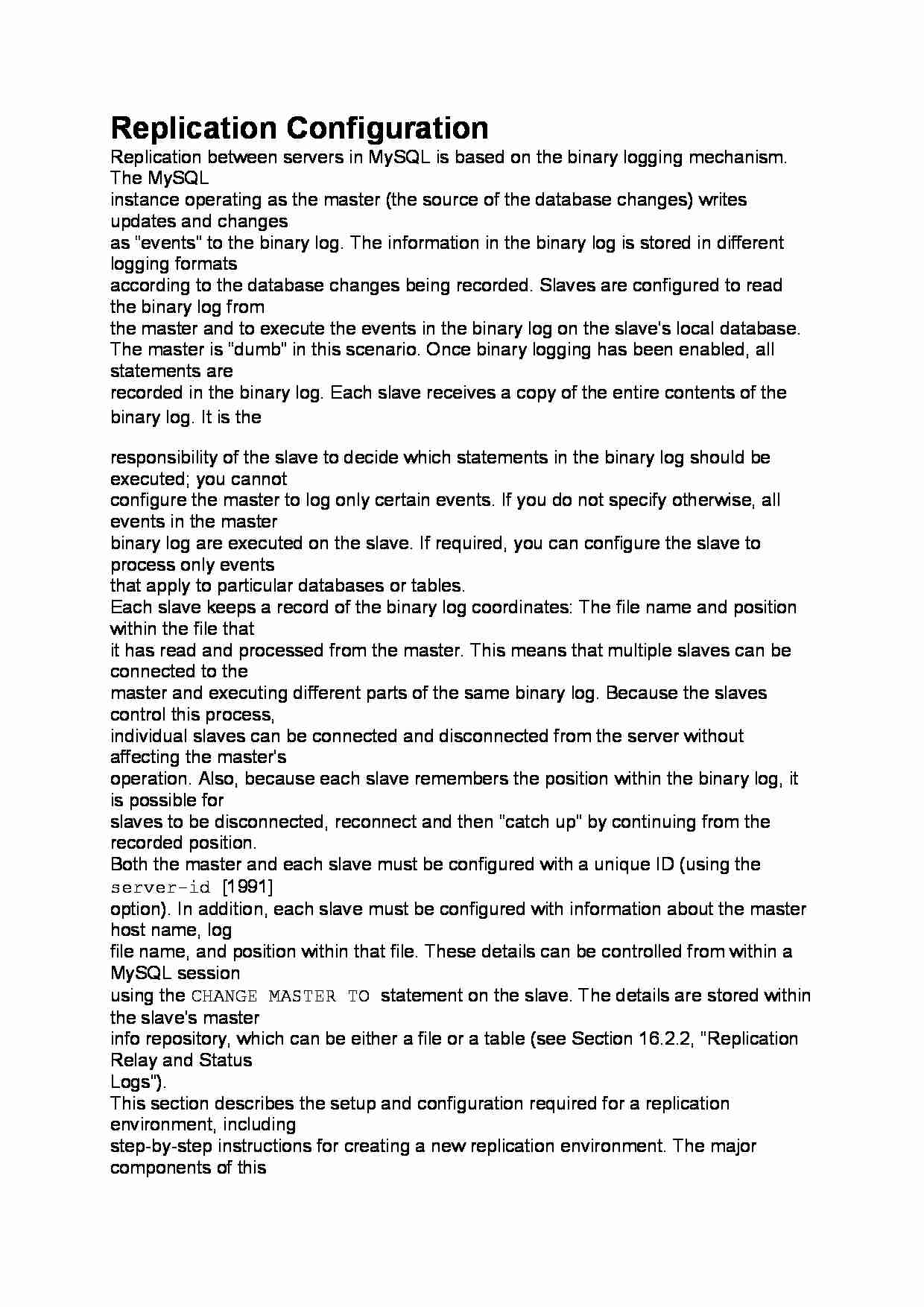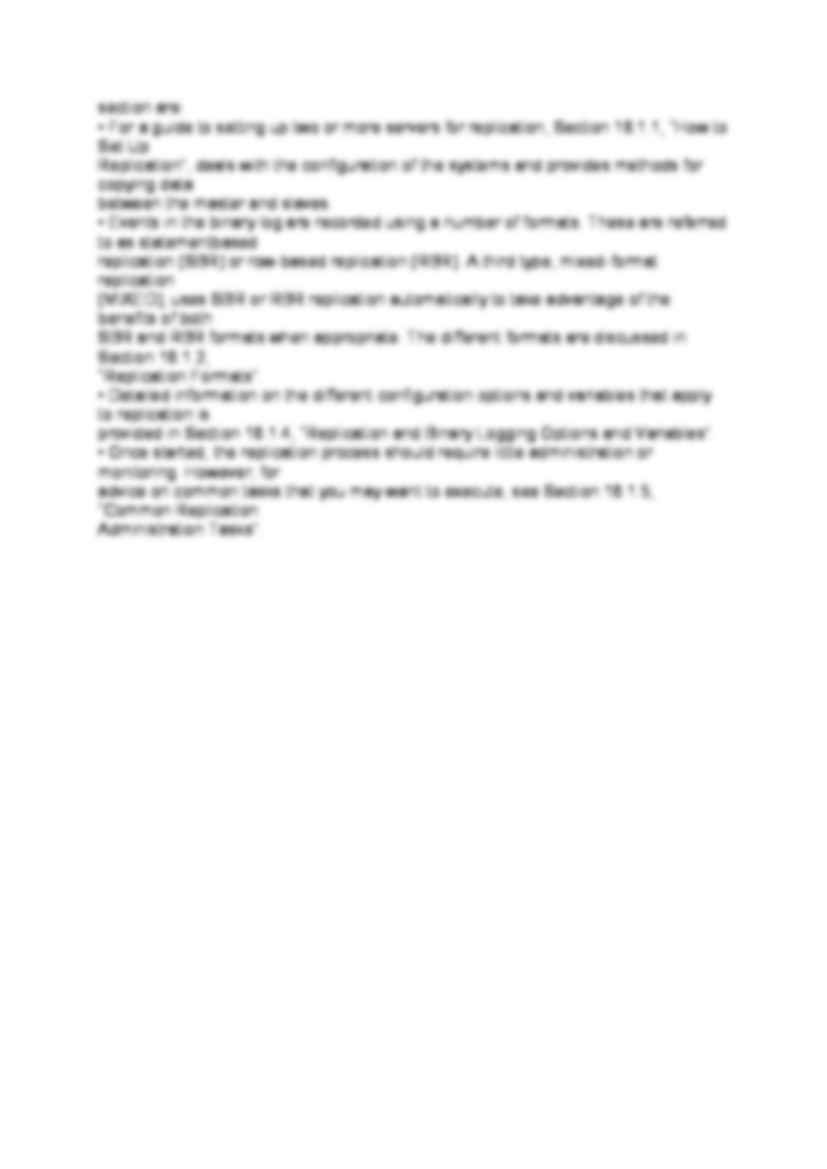To tylko jedna z 2 stron tej notatki. Zaloguj się aby zobaczyć ten dokument.
Zobacz
całą notatkę


Replication Configuration
Replication between servers in MySQL is based on the binary logging mechanism. The MySQL
instance operating as the master (the source of the database changes) writes updates and changes
as “events” to the binary log. The information in the binary log is stored in different logging formats
according to the database changes being recorded. Slaves are configured to read the binary log from
the master and to execute the events in the binary log on the slave's local database.
The master is “dumb” in this scenario. Once binary logging has been enabled, all statements are
recorded in the binary log. Each slave receives a copy of the entire contents of the binary log. It is the
responsibility of the slave to decide which statements in the binary log should be executed; you cannot
configure the master to log only certain events. If you do not specify otherwise, all events in the master
binary log are executed on the slave. If required, you can configure the slave to process only events
that apply to particular databases or tables.
Each slave keeps a record of the binary log coordinates: The file name and position within the file that
it has read and processed from the master. This means that multiple slaves can be connected to the
master and executing different parts of the same binary log. Because the slaves control this process,
individual slaves can be connected and disconnected from the server without affecting the master's
operation. Also, because each slave remembers the position within the binary log, it is possible for
slaves to be disconnected, reconnect and then “catch up” by continuing from the recorded position.
Both the master and each slave must be configured with a unique ID (using the server-id [1991]
option). In addition, each slave must be configured with information about the master host name, log
file name, and position within that file. These details can be controlled from within a MySQL session
using the CHANGE MASTER TO statement on the slave. The details are stored within the slave's master
info repository, which can be either a file or a table (see Section 16.2.2, “Replication Relay and Status
Logs”).
This section describes the setup and configuration required for a replication environment, including
step-by-step instructions for creating a new replication environment. The major components of this
section are:
• For a guide to setting up two or more servers for replication, Section 16.1.1, “How to Set Up
Replication”, deals with the configuration of the systems and provides methods for copying data
between the master and slaves.
... zobacz całą notatkę




Komentarze użytkowników (0)